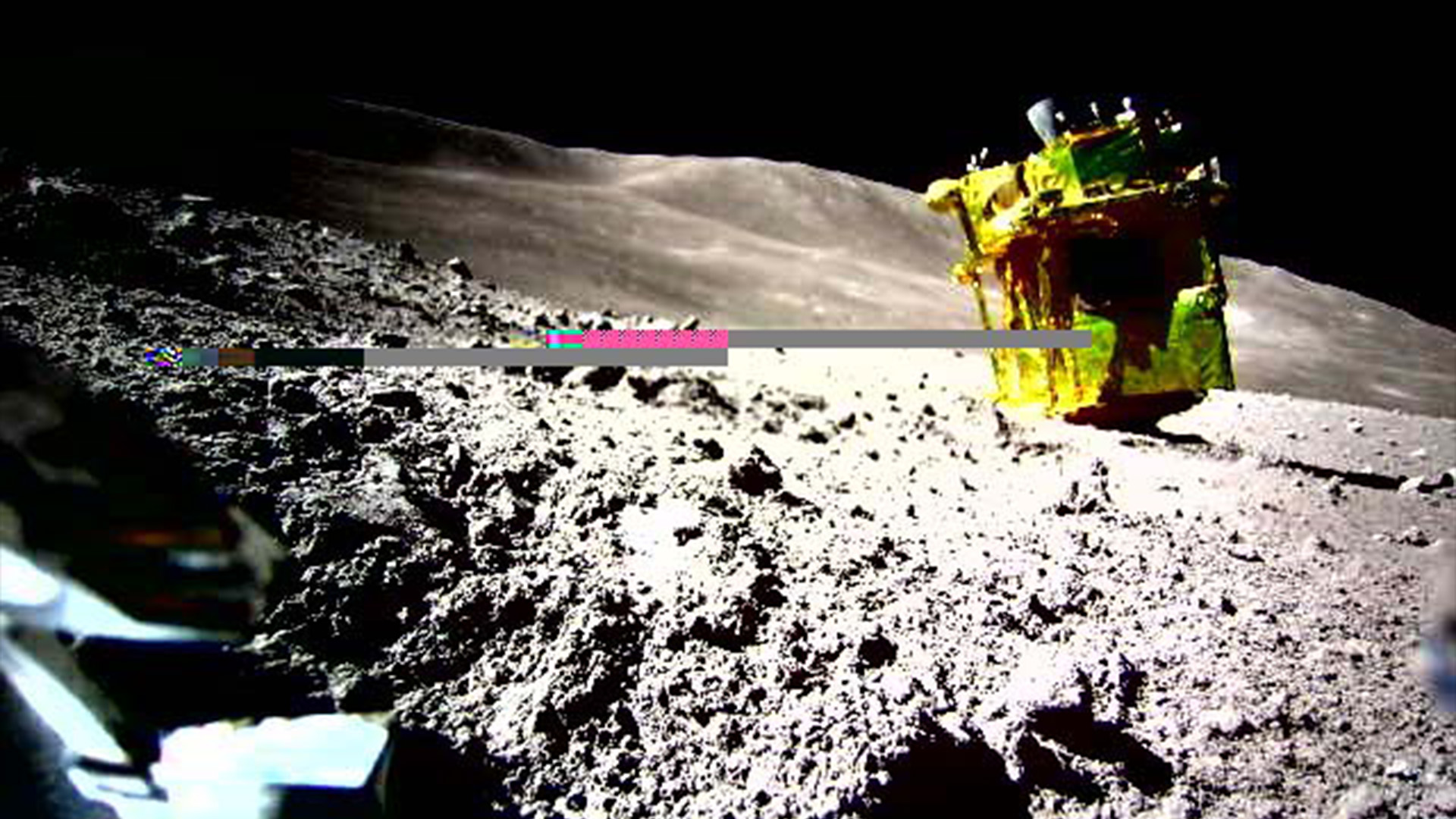SLIM lives! Japan's moon lander revives after freezing lunar night, defying expectations
After enduring two weeks in the freezing lunar night, Japan's SLIM moon lander awoke long enough to snap some new pictures and communicate with researchers on Earth.

Japan's SLIM moon lander has seemingly defied death — for a second time.
After being powered down on Jan. 31 for what was assumed to be a mission-ending, two-week-long sleep in the freezing lunar night, the lander unexpectedly woke up and responded to a command sent by the Japan Aerospace Exploration Agency (JAXA) Sunday night (Feb. 25).
"Last night, a command was sent to SLIM and a response received, confirming that the spacecraft has made it through the lunar night and maintained communication capabilities," JAXA wrote on X (formerly Twitter), Sunday. Communication with SLIM was suspended "after a short time," as increasingly hot conditions at the landing site near the moon's equator were causing SLIM's instruments to overheat, JAXA officials added.
Related: 'Everything has changed since Apollo': Why landing on the moon is still incredibly difficult in 2024
This is the second surprise revival for SLIM — short for "Smart Lander for Investigating Moon" — since it touched down on the lunar surface on Jan. 19 in the most precise lunar landing in history. Despite making a pinpoint touchdown, the craft accidentally landed upside down, forcing engineers to shut down SLIM almost immediately when it became clear that the craft's solar energy cells were not receiving adequate sunlight. SLIM briefly powered back on nine days later, when the direction of incoming sunlight changed enough to power SLIM's solar cells. However, its operations were limited to a few hours before it powered off again.
SLIM's ongoing survival is remarkable, JAXA said, as the craft was not designed to endure lunar night — the roughly 14-day period when much of the moon's near side is deprived of sunlight, resulting in temperatures as low as minus 208 degrees Fahrenheit (minus 133 degrees Celsius) at the lunar equator, according to NASA.
越夜の成功を信じ、MBCチームは前回見えなかった赤枠内を撮像する新たなコマンドを作りました!さらなる観測の可能性にワクワクしています!#SLIM #JAXAまだまだ #たのしむーん pic.twitter.com/1EQbUXstZTFebruary 26, 2024
Now that lunar daytime has resumed (which you can see in the form of the nearly full "snow moon" in the sky tonight), SLIM must endure sweltering temperatures of up to 250 F (121 C) instead. According to JAXA, preparations have been made to continue communicating with SLIM "when instrument temperatures have sufficiently cooled."
Get the world’s most fascinating discoveries delivered straight to your inbox.
With SLIM's successful landing last month, Japan became the fifth nation to reach the lunar surface, after the former Soviet Union, the United States, China and India.
India's Chandrayaan-3 lunar lander, which touched down near the lunar south pole on Aug. 23, 2023, managed to study the area for about two weeks before it, too, was forced to shut down during the lunar night. Unlike SLIM, India's lander never woke up from its lunar hibernation.

Brandon is the space / physics editor at Live Science. With more than 20 years of editorial experience, his writing has appeared in The Washington Post, Reader's Digest, CBS.com, the Richard Dawkins Foundation website and other outlets. He holds a bachelor's degree in creative writing from the University of Arizona, with minors in journalism and media arts. His interests include black holes, asteroids and comets, and the search for extraterrestrial life.


